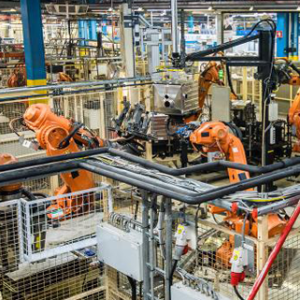New Study Examines Impact of Industrial Robots on the Male and Female Workforces
Posted on Dec 08, 2021 | Comments 0
 A new study by economists at the University of Pittsburgh, the Free University of Berlin in Germany, and Bocconi University in Italy finds that the increased use of industrial robots in a given area can have an adverse impact on male workers but can have a beneficial impact for women.
A new study by economists at the University of Pittsburgh, the Free University of Berlin in Germany, and Bocconi University in Italy finds that the increased use of industrial robots in a given area can have an adverse impact on male workers but can have a beneficial impact for women.
In 741 U.S. regions that were more exposed to industrial robots, the research team found a statistical decline in men’s wages and workforce participation. They also saw a decline in marriage stability, marriage fertility, and the earning power of men. Men’s decreased income translated into a reduction in the gender income gap by 4.2 percent and the workforce-participation gender gap by 2.1 percent, meaning that women in these regions gained greater bargaining power.
“Male income fell at a substantially higher rate than female income, decreasing the gender income gap. Moreover, robot exposure has increased female labor force participation significantly while leaving the labor force participation of men unchanged,” said Osea Giuntella, an assistant professor of economics at the University of Pittsburgh and a co-author of the study. “We argue that these labor market effects affected men’s marriageability and women’s willingness to long-term commitments with a decline in marriages and marital fertility.”
The family dynamic was also greatly affected, the study found. While they discovered no change in the fertility rate overall, marital fertility sustained a 12 percent decline amid a 15 percent increase in nonmarital births. Regions experiencing an increase in robot exposure were also associated with a 1 percent reduction in marriage rate, a 9 percent increase in divorces and a 10 percent increase in the likelihood of cohabitations.
The full study, “Robots, Marriageable Men, Family, and Fertility,” was published on the website of the Journal of Human Resources. It may be accessed here.
Filed Under: Research/Study








